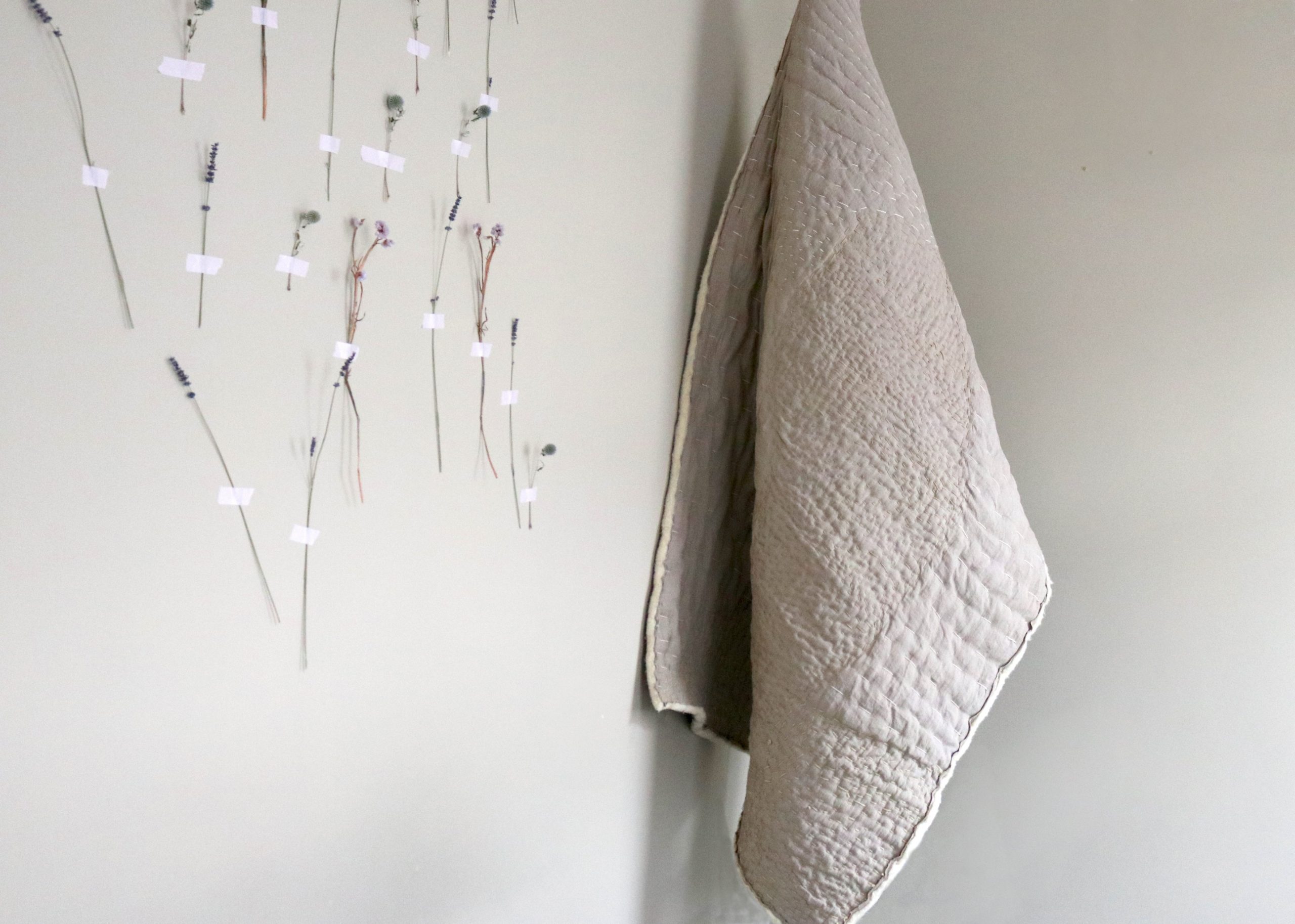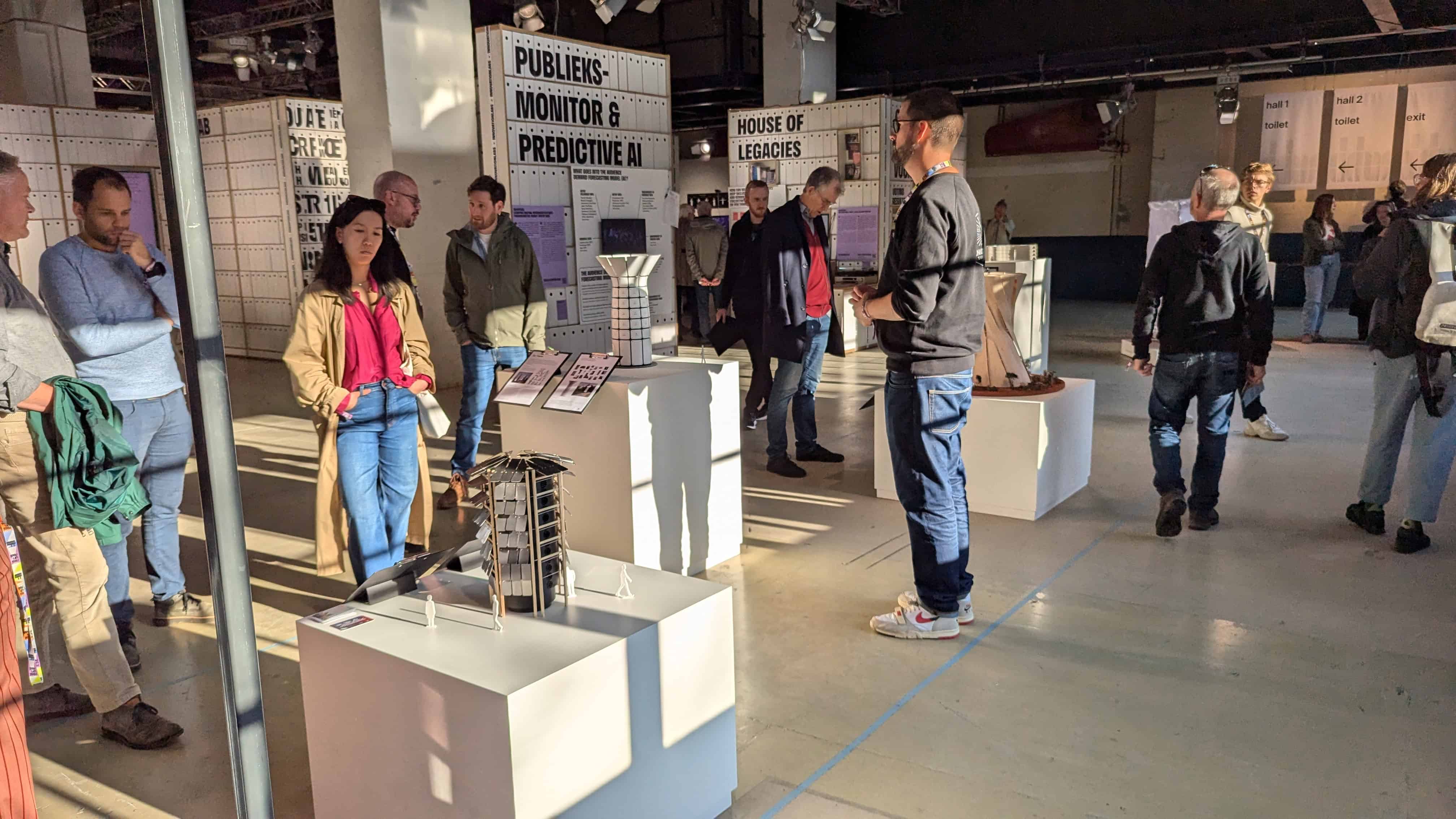
This year Nienke Hoogvliet will be at the Dutch Design Week in the Schellensfabriek for the seventh time. Her exhibition called H.E.R.B.S – Healthier Environment Remedy for Body and Skin – focuses on the beneficial effects of clothing fabrics on human health.
Nienke opened her own design studio six years ago. With her company, she wants to show what the opportunities are when it comes to new sustainable materials such as textiles. “I work on projects that allow people to look at situations in other ways than they are currently doing.”
Nienke has been idealistic from a very young age. At the Willem de Kooning Academy in Rotterdam she learned how to use stories to convey an idealistic message in a creative way and to make people aware of things. She wanted to symbolize the contamination of the sea with her graduation project SEAME. Which is a dress made out of threads of seaweed found in a discarded fishing net. The fishing net symbolizes the pollution, while the seaweed threads represent the sustainable potential that the sea has to offer. SEAME is currently on display at the Cube design museum in Kerkrade in the Netherlands.

Nienke also wants to promote a social message at this year’s Dutch Design Week. “Chemicals are needed for almost every step of the textile manufacturing process. So, I was wondering if they had actually vanished by the time you buy them in the shop,” Nienke explains. She examined whether there are substances that clothing might release that are also beneficial for our health. She then studied herbs such as chamomile, sage and rosemary. She used these herbs to dye samples that were subsequently tested in a laboratory in Belgium. The research showed that essential oils can be transferred from the dye to the textile. Incorporating beneficial herbs in clothing is something that certain cultures have already done in the past. Traditionally, spices such as indigo, turmeric and rose madder have been used in clothing in Asia. “Indigo was used by the Samurai as an undergarment so that their wounds would heal faster. Indigo has an antibacterial effect.”
As a designer, Nienke is quick to look at materials that are suitable for reuse. She has been working with Dutch Water Boards since 2016. For instance, she has collaborated on a project to recycle toilet paper that can be reclaimed from wastewater. Aside from that, she has also designed urns using bio-plastic made from wastewater. “As a designer, you make things. Yet I don’t want to add anything to the world if there is already a surplus.”
Location: Schellensfabriek, Bleekweg 1M
The Dutch Design Week is the largest design festival in Northern Europe. Each year, we pick out ten designers from a huge selection that we consider to be this year’s Hidden Gems. You can read all about their stories there.
This series was created in collaboration with Dutch Design Daily and curator Katja Lucas from DDW. Would you like to visit the DDW hidden gems yourself? Every day, Brandstore Eindhoven/VVV is organizing a bicycle tour along the selected designers. More info can be found here.




